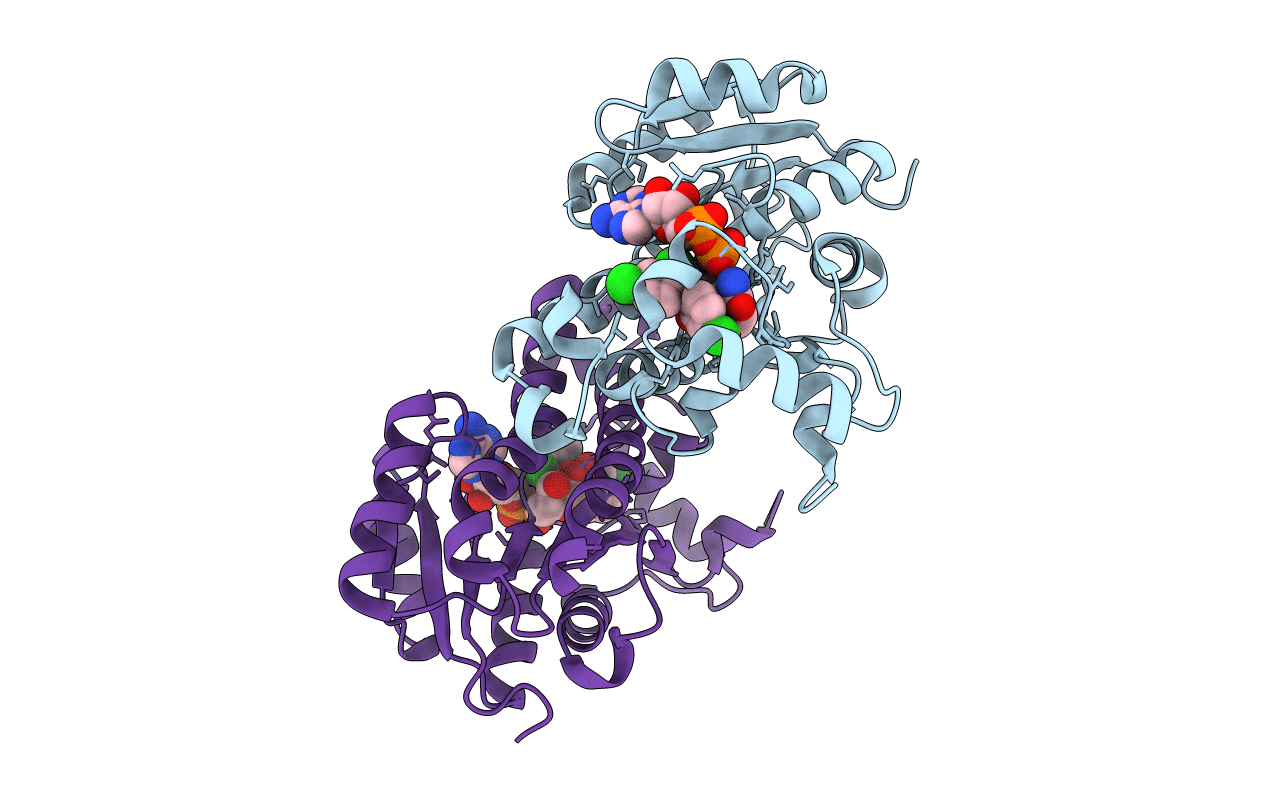
Deposition Date
2010-06-30
Release Date
2010-11-10
Last Version Date
2023-09-06
Entry Detail
PDB ID:
3NRC
Keywords:
Title:
Crystal Structure of the Francisella tularensis enoyl-acyl carrier protein reductase (FabI) in complex with NAD+ and triclosan
Biological Source:
Source Organism:
Francisella tularensis subsp. tularensis (Taxon ID: 177416)
Host Organism:
Method Details:
Experimental Method:
Resolution:
2.10 Å
R-Value Free:
0.24
R-Value Work:
0.18
R-Value Observed:
0.18
Space Group:
P 21 21 2


